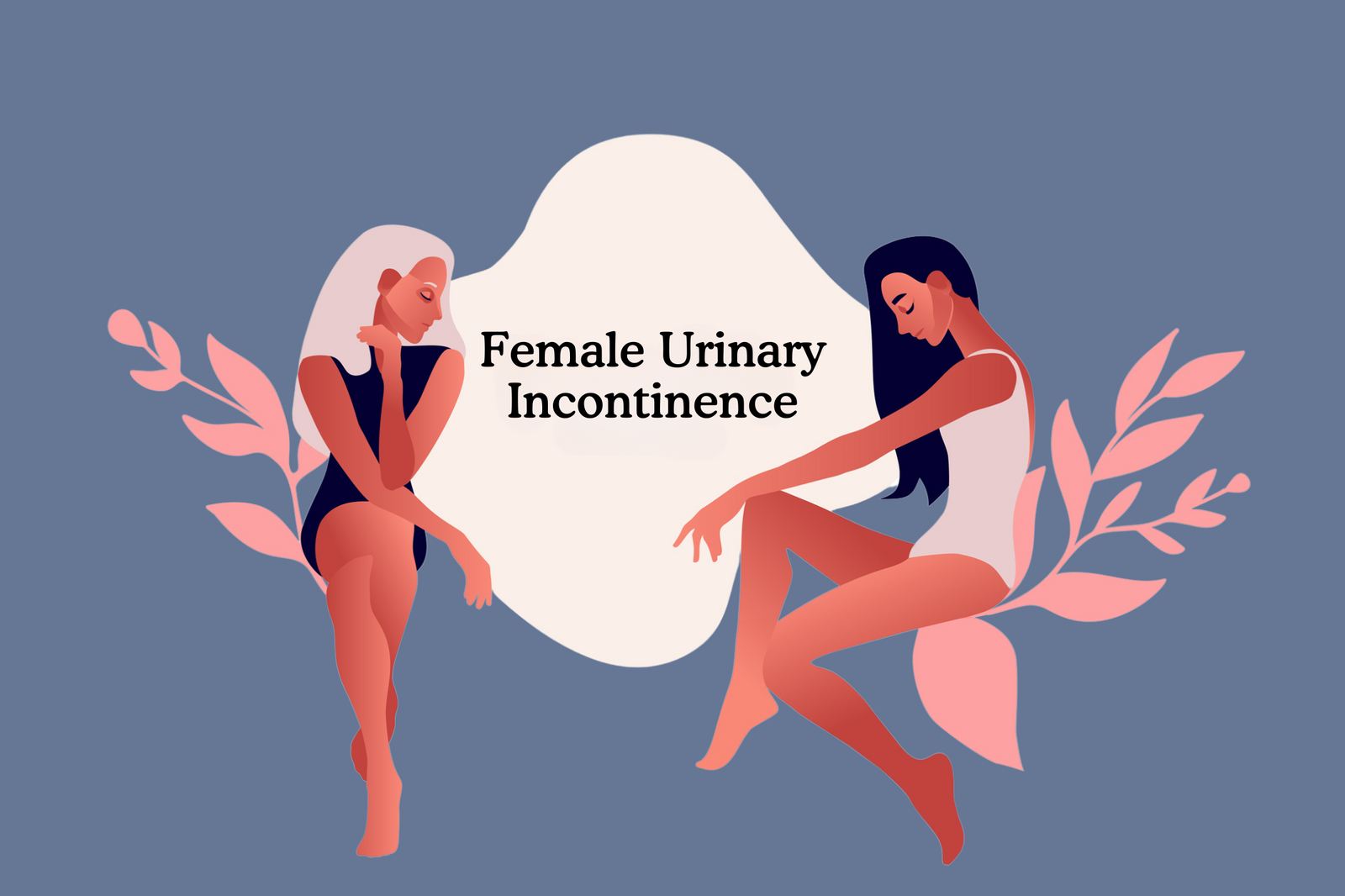Female urinary incontinence is a common condition that affects millions of women worldwide, in fact up to 75% of women over 65 report urine leakage. It can have a significant impact on a woman's quality of life, causing embarrassment, discomfort, and even social isolation. On average, women wait 6.5 years before seeing a provider about their symptoms. Fortunately, there have been significant advancements in the treatment of female urinary incontinence. In this article, we will explore the latest developments in both traditional and non-traditional treatment options, as well as discuss the future of urinary incontinence treatment.
Understanding Female Urinary Incontinence
Before we delve into the treatment options, it's important to understand what female urinary incontinence is and what causes it. Urinary incontinence is defined as the involuntary leakage of urine. In women, it is often attributed to weakened pelvic floor muscles, hormonal changes, pregnancy and childbirth, and age-related factors. The two most common types of urinary incontinence are stress incontinence and urge incontinence.
It is estimated that approximately one in three women will experience urinary incontinence at some point in their lives. While it is more common in older women, it can affect women of all ages.

Causes and Symptoms of Female Urinary Incontinence
To understand the causes of urinary incontinence, it is essential to know the factors that contribute to the weakening of the pelvic floor muscles. These factors include pregnancy, childbirth, obesity, and hormonal changes associated with menopause. Pregnancy and childbirth, in particular, can put significant strain on the pelvic floor muscles, leading to their weakening over time.
Menopause is also a significant contributor. As estrogen levels decrease, the tissues in the urinary tract may become thinner and less elastic, making them more prone to leakage.
The symptoms of urinary incontinence can vary from minor leakage during activities such as coughing or sneezing to a complete loss of bladder control. Some women may also experience a frequent and urgent need to urinate, known as urge incontinence. It's important for women to seek medical advice if they experience any concerning symptoms, as there are various treatment options available.

The Impact of Urinary Incontinence on Women's Health
Female urinary incontinence not only affects a woman's physical well-being but also her emotional and psychological health. Many women feel embarrassed and self-conscious about their condition, leading to a decrease in their self-esteem and quality of life. It can also impact personal relationships and sexual intimacy, causing strain and frustration.
Furthermore, urinary incontinence can have practical implications on a woman's daily life. It may limit her ability to engage in physical activities or social events, leading to feelings of isolation and restriction. The constant worry and fear of leakage can also be mentally exhausting, adding an additional burden to the already challenging experience.
Therefore, it's crucial to explore effective treatment options that can alleviate these symptoms and improve overall well-being. From pelvic floor exercises and lifestyle modifications to medications and surgical interventions, there are various approaches available to manage and treat female urinary incontinence. Seeking medical advice and discussing treatment options with healthcare professionals is the first step towards regaining control and improving quality of life.

Traditional Treatments for Female Urinary Incontinence
Before the advent of newer treatment options, traditional approaches were commonly used to manage female urinary incontinence. These treatments include medications and surgical interventions.
While there are various causes of urinary incontinence, including pregnancy, childbirth, menopause, and pelvic floor muscle weakness, traditional treatments have been developed to address the symptoms and improve bladder control.
Medications and Their Effectiveness
Medications, such as anticholinergics and alpha-adrenergic agonists, are often prescribed to treat urge incontinence. These medications work by targeting the bladder muscles, helping to relax them and improve bladder control. While they have been found to be effective for some women, it is important to note that medication alone may not address the underlying cause of urinary incontinence.
Anticholinergics, commonly prescribed for urge incontinence, work by blocking the action of acetylcholine, a neurotransmitter that stimulates bladder contractions. By inhibiting these contractions, anticholinergics can help reduce the frequency and urgency of urination. However, they may also cause side effects such as dry mouth, constipation, and blurred vision.
Alpha-adrenergic agonists, on the other hand, work by stimulating alpha-adrenergic receptors in the bladder neck and urethra, which helps to tighten the muscles and improve bladder control. While they can be effective in reducing urinary leakage, they may also cause side effects such as increased blood pressure and heart rate.
It is important for women considering medication as a treatment option to discuss the potential benefits and risks with their healthcare provider. They should also be aware that medication alone may not provide a long-term solution and that other treatment options may need to be explored.
Surgical Interventions and Their Outcomes
Surgical interventions are considered when conservative treatments fail to provide adequate relief or when the underlying cause of urinary incontinence requires surgical correction. These procedures aim to provide support to the bladder and urethra, preventing leakage and improving bladder control.
One common surgical procedure for urinary incontinence is sling surgery. This involves the placement of a supportive sling made of synthetic material or the patient's own tissue under the urethra. The sling acts as a hammock, providing support and preventing urine leakage. Sling surgery has been found to be effective in reducing or eliminating urinary incontinence in many women.
Another surgical option is bladder neck suspension, which involves repositioning and securing the bladder neck and urethra to provide better support. This procedure can be performed through open surgery or minimally invasive techniques, such as laparoscopy or robot-assisted surgery. Bladder neck suspension has shown positive outcomes in improving bladder control and reducing urinary leakage.
In some cases, women may opt for an artificial urinary sphincter implant. This device consists of a cuff that is placed around the urethra and a pump that is implanted in the scrotum (for male patients) or the labia (for female patients). The cuff is inflated to close off the urethra, preventing urine leakage. When the patient needs to urinate, they can manually deflate the cuff using the pump. While this procedure can be effective, it carries the risk of complications such as infection or device malfunction.
It is important for women considering surgical interventions to have a thorough discussion with their healthcare provider to understand the potential benefits, risks, and expected outcomes of the procedure. Not all women may be suitable candidates for surgery, and alternative treatment options should be explored if necessary.
Innovations in Non-Surgical Treatments
In recent years, there have been exciting advancements in non-surgical treatments for female urinary incontinence. These treatments focus on strengthening the pelvic floor muscles and improving bladder control without the need for invasive procedures.
Pelvic Floor Muscle Training and Biofeedback
Pelvic floor muscle training, also known as Kegel exercises, has long been recommended as a first-line treatment for female urinary incontinence. These exercises involve contracting and relaxing the pelvic floor muscles to improve their strength and endurance. Biofeedback techniques, which use sensors and visual cues, can help women to properly engage the correct muscles during the exercises. Studies have shown that pelvic floor muscle training combined with biofeedback can lead to significant improvements in bladder control.
Electrical Stimulation Therapies
Electrical stimulation therapies involve the use of low-level electrical currents to stimulate the pelvic floor muscles. This stimulation can help strengthen the muscles and improve bladder control. Different types of electrical stimulation, such as transcutaneous electrical nerve stimulation (TENS), Posterior Tibial Nerve Stimulation (PTNS), Sacral Nerve Stimulation (SNS), and intravaginal stimulation, are available, and their effectiveness depends on various factors including the severity of the condition and individual response.
Injectable Treatments
There are several treatments that involve injecting different medications into or around the pelvic area to treat different types of incontinence. One such treatment is Botox injections which helps treat overactive bladder (OAB). Another treatment is Bulkamid which is used to treat stress incontinence.
Advances in Surgical Treatments
While traditional surgical interventions have been used for many years, recent advancements in surgical techniques have made the procedures less invasive and more precise, resulting in improved outcomes for women with urinary incontinence.
Minimally Invasive Surgical Techniques
Minimally invasive surgical techniques, such as the use of laparoscopic or robotic-assisted surgery, have been introduced to treat urinary incontinence. These procedures involve smaller incisions and result in reduced pain, shorter hospital stays, and faster recovery times. Furthermore, they offer better visualization and precision, allowing for more accurate placement of support structures and improved long-term outcomes.
The Role of Robotics in Incontinence Surgery
Robotics-assisted surgery has revolutionized the field of urinary incontinence treatment. Robotic systems allow surgeons to perform complex procedures with enhanced precision and control. The robotic approach offers a three-dimensional view, increased maneuverability, and improved dexterity. This technology has the potential to minimize surgical complications and optimize outcomes in select cases.

The Future of Female Urinary Incontinence Treatment
The future of female urinary incontinence treatment holds great promise with exciting developments in the pipeline. Researchers and medical professionals are continually exploring innovative technologies and therapies to revolutionize the management of this condition.
Emerging Technologies and Therapies
Emerging technologies, such as stem cell therapy and neuromodulation techniques, are being investigated for their potential in treating female urinary incontinence. These therapies aim to address the underlying causes of incontinence by repairing or regenerating damaged tissues and improving nerve function. While still in the early stages of research, these advancements offer hope for more effective and long-lasting treatment options in the future.
The Potential of Personalized Medicine in Treatment
Advances in genetic and molecular research may pave the way for personalized medicine in the treatment of female urinary incontinence. Understanding individual genetic predispositions and unique biomarkers associated with incontinence could lead to tailored treatment plans that are optimized for each patient. Personalized medicine has the potential to improve treatment outcomes and minimize side effects by targeting specific underlying causes.
Conclusion
In conclusion, recent developments in the treatment of female urinary incontinence have brought forth various innovative options for women seeking relief. Traditional treatments, such as medications and surgical interventions, continue to play a role in managing the condition. Non-surgical approaches focusing on pelvic floor muscle training and electrical stimulation therapies offer effective and non-invasive alternatives. Additionally, advances in surgical techniques, including minimally invasive and robotic-assisted procedures, have revolutionized the field. Looking ahead, the future of urinary incontinence treatment holds promise with emerging technologies and therapies, as well as the potential of personalized medicine. With these developments, women suffering from urinary incontinence can look forward to improved quality of life and greater control over their bladder function.
Are you suffering from bladder leaks? Take our bladder leak quiz and find out which bladder protection product would suit your lifestyle best.
If you're struggling with incontinence, join our private support group today!
Women's Incontinence Support Group
Sources:
Mayo Clinic Health System. (2022, Nov. 7). Is Urine Incontinence Normal for Women? https://www.mayoclinichealthsystem.org/hometown-health/speaking-of-health/is-urine-incontinence-normal-for-women
Denver Urology. (2018, Feb. 12). A Guy's Guide to Male Incontinence. https://www.denverurology.com/urology-blog/guys-guide-male-incontinence/
Continence Matters. (n.d.). Incontinence Facts and Stats. https://continencematters.com/health-information/incontinence-and-prolapse/incontinence-facts-and-stats/
Yale Medicine. (n.d.). Urinary Incontinence in Women. https://www.yalemedicine.org/conditions/urinary-incontinence-in-women#:~:text=What%20are%20the%20underlying%20causes,impairment%2C%20chronic%20coughing%20or%20constipation.
Kaiser Permanente. (n.d.). Urethral Sling Surgery. https://healthy.kaiserpermanente.org/health-wellness/health-encyclopedia/he.urethral-sling-surgery.hw219880
Mercy. (n.d.). Surgical Bladder Suspension. https://www.mercy.com/health-care-services/urology/treatments/surgical-bladder-suspension
MedlinePlus. (2022, Apr. 10). Urinary Incontinence. https://medlineplus.gov/ency/article/003983.htm
Frontiers. (2023, Jan. 13). Novel Bioelectronic Implant for Treating Incontinence. https://www.frontiersin.org/articles/10.3389/fcell.2023.1007703/full
University of Oxford. (2023, Jan 31). Oxford Spinout Trials Revolutionary Bioelectronic Implant to Treat Incontinence. https://www.ox.ac.uk/news/2023-01-31-oxford-spinout-trials-revolutionary-bioelectronic-implant-treat-incontinence
































